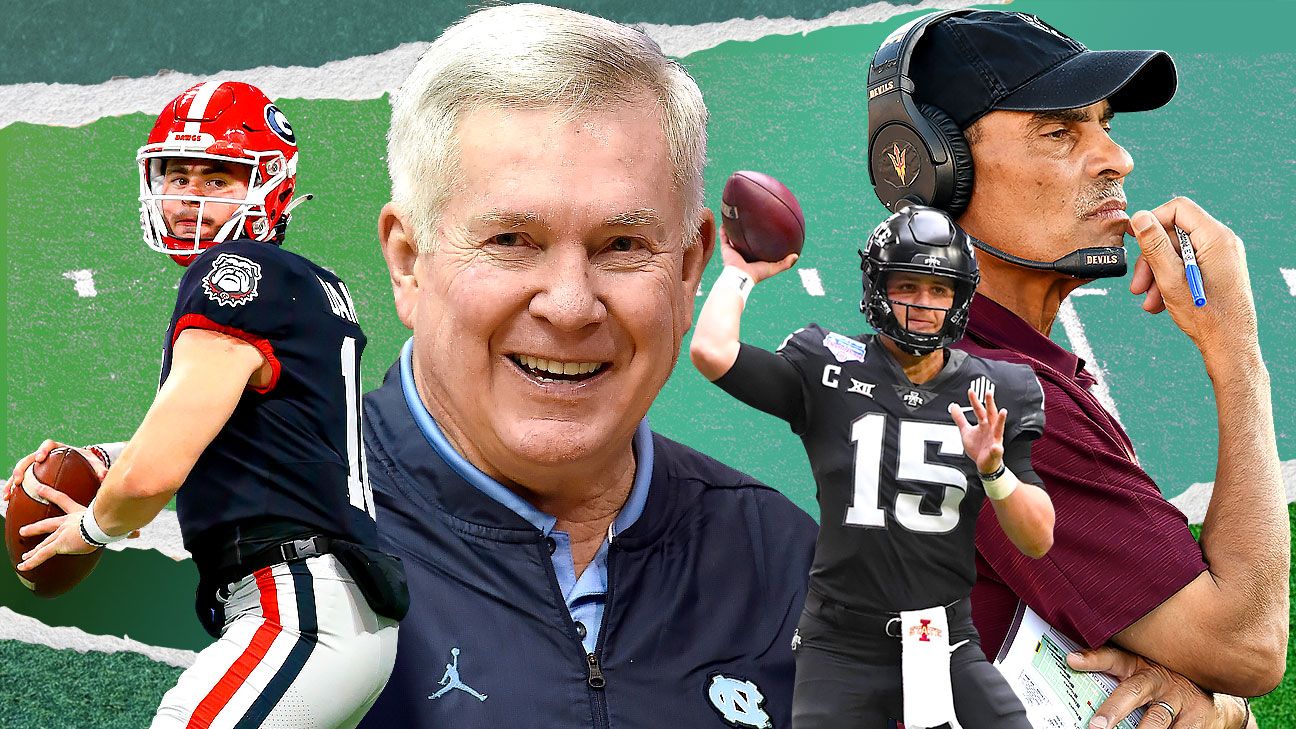MisterGopher
Well-known member
- Joined
- Nov 12, 2008
- Messages
- 465
- Reaction score
- 273
- Points
- 63
Tier 7: The résumé-builders
Air Force, Appalachian State, Arkansas, Ball State, Baylor, Boston College, Buffalo, BYU, Cal, Colorado, Houston, Kansas State, Kent State, Liberty, Louisiana, Marshall, Memphis, Minnesota, Missouri, Oregon State, Pitt, San Diego State, San Jose State, SMU, Stanford, Tulane, Tulsa, Virginia Tech, Wake Forest
We all know a great win when we see one. Two top-10 teams face off, one emerges a victor, and we've got ourselves a clear playoff contender. But those games actually are pretty rare. Last season, we had just nine regular-season games between top-15 teams, with only Alabama playing in more than one. In 2019, there were just 17 such games and only five teams (including all four that made the playoff) won more than one of them. That's why this tier of teams is so important. They're the solid C-plus students. These teams can help us split hairs between the elites.
It's a mistake to use "top-25 wins" on a playoff team's résumé because how much better is a win over No. 24 than one against No. 28? Identifying teams outside the top 25 that offer some measure of talent, coaching, star power or experience is critical because, while they're unlikely to make a run at the playoff, they provide real challenges to the teams that will. While Clemson, Oregon or Oklahoma might face just one other elite opponent in 2021, a steady diet of "not half-bad teams" offers its own challenges, too.
Will anyone in this group make a push for something more? Odds are, at least one will. Who saw Coastal Carolina coming last year? Or Minnesota in 2019? Or Washington State in 2018? You might want to argue for Liberty, though the Flames' 4-1 record in one-score games offers concern. They also were the only team in the playoff era to finish in the AP top 20 with an FPI ranking worse than 70th. Perhaps better cases can be made for App State (No. 26 in SP+), Virginia Tech (No. 28) or Minnesota (No. 34). And then there's BYU. The Cougars certainly weren't a one-man team in 2020, but the headline act from Zach Wilson was so impressive that it's hard to see this team repeating the performance with a new QB in 2021.
Somewhere in this mix are one or two legitimate top-20 programs and the rest likely provide cannon fodder for the elite teams looking to pad their résumés. In short, after we get past the truly interesting teams, this tier represents the rest of the top half of college football.

 www.espn.com
www.espn.com
Air Force, Appalachian State, Arkansas, Ball State, Baylor, Boston College, Buffalo, BYU, Cal, Colorado, Houston, Kansas State, Kent State, Liberty, Louisiana, Marshall, Memphis, Minnesota, Missouri, Oregon State, Pitt, San Diego State, San Jose State, SMU, Stanford, Tulane, Tulsa, Virginia Tech, Wake Forest
We all know a great win when we see one. Two top-10 teams face off, one emerges a victor, and we've got ourselves a clear playoff contender. But those games actually are pretty rare. Last season, we had just nine regular-season games between top-15 teams, with only Alabama playing in more than one. In 2019, there were just 17 such games and only five teams (including all four that made the playoff) won more than one of them. That's why this tier of teams is so important. They're the solid C-plus students. These teams can help us split hairs between the elites.
It's a mistake to use "top-25 wins" on a playoff team's résumé because how much better is a win over No. 24 than one against No. 28? Identifying teams outside the top 25 that offer some measure of talent, coaching, star power or experience is critical because, while they're unlikely to make a run at the playoff, they provide real challenges to the teams that will. While Clemson, Oregon or Oklahoma might face just one other elite opponent in 2021, a steady diet of "not half-bad teams" offers its own challenges, too.
Will anyone in this group make a push for something more? Odds are, at least one will. Who saw Coastal Carolina coming last year? Or Minnesota in 2019? Or Washington State in 2018? You might want to argue for Liberty, though the Flames' 4-1 record in one-score games offers concern. They also were the only team in the playoff era to finish in the AP top 20 with an FPI ranking worse than 70th. Perhaps better cases can be made for App State (No. 26 in SP+), Virginia Tech (No. 28) or Minnesota (No. 34). And then there's BYU. The Cougars certainly weren't a one-man team in 2020, but the headline act from Zach Wilson was so impressive that it's hard to see this team repeating the performance with a new QB in 2021.
Somewhere in this mix are one or two legitimate top-20 programs and the rest likely provide cannon fodder for the elite teams looking to pad their résumés. In short, after we get past the truly interesting teams, this tier represents the rest of the top half of college football.

The 10 tiers of college football in 2021: Favorites, disappointments and potential surprise teams
We broke down all 130 FBS teams by tier -- from the group of playoff favorites to those awaiting their next participation trophy.
